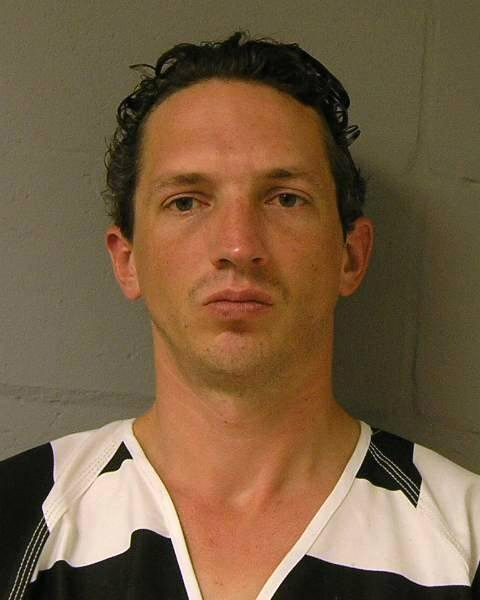SEATTLE – As they talked with him in a conference room at the federal courthouse in Anchorage, agents already were confident they had Samantha Koenig’s abductor.
They had surveillance footage of Israel Keyes’ truck parked outside of the lonely coffee stand where Koenig was working when she was kidnapped one frozen night in Anchorage. They had the ATM withdrawals the 34-year-old construction worker had made with her bank card. They had a ski mask found in the trunk of his vehicle. It wasn’t long before he confessed.
It was the way Keyes confessed to the killing that day in March that turned the agents’ confidence to alarm: The adrenaline was almost visible as he described how overwhelmingly powerful he felt as he pointed a gun at Koenig’s ribs.
“His demeanor, the level of detail, the lack of remorse, the enjoyment he was getting out of telling certain details,” recalled Kevin Feldis, chief of the criminal division for the U.S. attorney’s office in Alaska.
Feldis felt a growing suspicion: “This was not the first time he killed somebody.”
Over the last few months, Feldis and a team of detectives in Anchorage have been sharing jokes, bagels and coffee with the often-talkative but cagey suspect who promised to tell them everything about his crimes.
By November, Keyes had admitted to eight slayings and hinted there were more, laying out a trail of killings, arson, robbery and sexual assault that spanned the width of the country. His death in a jailhouse suicide last week left law enforcement authorities scrambling to identify all eight victims and figure out how many others may have fallen prey to a man they now believe was a meticulous and prolific serial killer.
The FBI has banked Keyes’ DNA and asked police and the public across the country to come forward with unsolved deaths, disappearances and possible sightings in an attempt to learn who his other victims may have been. A photo surfaced this week of someone who could have been Keyes robbing a bank in New York. Agents are pushing especially hard here in Washington state, where Keyes lived before moving to Alaska, and where, he told authorities, he had killed four people between 2001 and 2006.
“The investigators are going over everything. There might be more they can extract from what he told them that they didn’t think about before — maybe if they put it in a different context, it could provide something important,” said Ayn Dietrich, FBI spokeswoman in Seattle.
Keyes is the second-youngest of 10 siblings, many with biblical names like Charity and Hosanna, who were instructed in homesteading skills such as carpentry and making goat milk soap. The family moved to the outskirts of an Amish community in Maine when Keyes’ father grew concerned that their upbringing was not rigorous enough.
Keyes joined the Army in 1998 and was posted at the former Fort Lewis base near Tacoma, Wash., at the time of his discharge in 2001. From there, he got a job doing maintenance and light construction in the remote Native American tribal community of Neah Bay, Wash. He had a daughter with a local woman and sought to win partial custody after they broke up.
About 2007, Keyes followed a girlfriend to Anchorage, where he started a construction company under his own name.
Keyes’ frequent trips across the country were opportunities to stash weapons, ammunition and other material used in his fatal assaults, FBI agents said.
Keyes was perhaps 18 years old when he committed his first sexual crime, which he described as a violent assault on a teenage girl he encountered on the Deschutes River in Oregon.
Agents heard horrific details of Keyes’ killing of Bill and Lorraine Currier in June 2011. Keyes cut the phone line to their house in Essex, Vt., broke in and tied them up in their bedroom. He took them to an old barn, where he shot Bill Currier, then raped and strangled his wife.
According to the Anchorage Daily News, Keyes drove to Maine after the killings, before heading back west and stopping in New Hampshire to burn some evidence.
Keyes told detectives he would wander around isolated places like trailheads and boat docks, looking for victims.
He told the agents about robbing a bank in Tupper Lake, N.Y., in April 2009, and another one in Azle, Texas, in February. Only last week, they said, he provided a few details about two of the four killings he reported committing in Washington state.
“I think he was conflicted on telling us and not telling us. When he was telling us details, he enjoyed telling us details. It was chilling to listen to him, to watch him,” said Anchorage police Officer Jeff Bell.
Send questions/comments to the editors.



Success. Please wait for the page to reload. If the page does not reload within 5 seconds, please refresh the page.
Enter your email and password to access comments.
Hi, to comment on stories you must . This profile is in addition to your subscription and website login.
Already have a commenting profile? .
Invalid username/password.
Please check your email to confirm and complete your registration.
Only subscribers are eligible to post comments. Please subscribe or login first for digital access. Here’s why.
Use the form below to reset your password. When you've submitted your account email, we will send an email with a reset code.